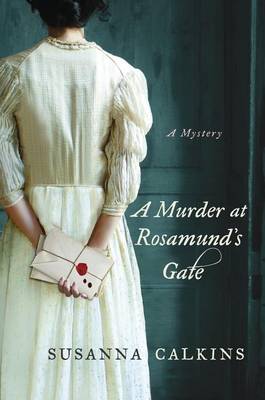Reviewed by kimbacaffeinate on
Lucy Campion is a chambermaid in the Hargraves home and she and the other servants are truly blessed to live in a home where the residents treat them more like family at a time period when young ladies are accosted and a servant can be fired at the drop of a hat. Her employer is the local Magistrate and his son a young lawyer. The tale shares with us the murders of young woman, the London courts and the horrors of the plague all through the eyes of our young maid. Lucy becomes someone of a young Nancy Drew as she tries to clear a loved one’s name and discover who killed her friend. There is a little side romance which I found quite interesting. The tale that unfolds was suspenseful with clever twists as Lucy uncovered clues and suspects.
The Hargraves home is quite an unusual one especially for the time period but I’d like to think that this occurred more often than those of society at the time let on. The servants are almost regarded as family, indeed taking meals with the family when guests are not present. While this is certainly not the norm I find it hard to believe that all households treated their servants as property, beat them and that young ladies regularly fell victim to the master’s advances. The Magistrate read to his servants at night, and Lucy loved these moments, in fact she asked questions and voice opinions. She has an inquisitive mind, and questions the workings of the legal system, the local law enforcement and decides to look into the murders herself. Adam the magistrate’s son, a young lawyer delighted and confused me all at the same time. His treatment of Lucy wavered like a flag blowing in the wind and the author explains him rather well but I wanted to throttle him more than once. We had a delightful list of suspects, servants and secondary characters that helped keep me guessing regarding the serial killer. The characters were nicely developed and Lucy herself felt very real.
This tale is a story within a story within a story. On one hand we have a murder mystery and a romance and in the other we have London with its political time period, the plague and its flawed court systems. While the author did a wonderful job of weaving them all together and the pacing was well done, it also left some of the threads thin. She beautifully described London, the markets, and the feelings of the people but the mystery did not always take center stage as these side stories got in the way. While for the most part historically accurate the author readily admits to using some modern language and changing some dates and I think her reasoning was valid although at first I did find these things jarring. The twists and turns regarding suspects were suspenseful and perhaps my favorite thread throughout the tale. I found Lucy’s detective work clever and often feared she would be discovered. The romance was sweet, complicated and appealed to my romantic side. The tale accurately depicted the upper classes opinions of servants; Quakers, the courts and the church giving us an inside look at the Restoration period. Calkins did a nice job with the murder, adding clever twists. I solved this before Lucy but had to wait for the motive to be revealed. The reveal was quite climatic, as were other threads as they closed keeping me turning the pages late into the night. The ending closed most threads allowing the reader to comfortably fill in the pieces.
ARC provided by publisher for unbiased review
See more of my reviews @ Caffeinated Book Reviewer
Reading updates
- Started reading
- 9 April, 2013: Finished reading
- 9 April, 2013: Reviewed
